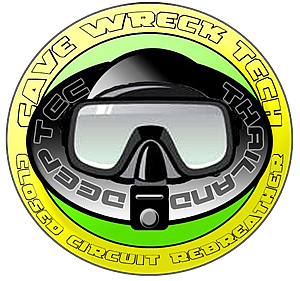What is a Rebreather?
by Bruce Konefe
For those of you that think rebreathers are something new to the market, this would be a statement far from the truth. Inventors where trying to develop rebreathers before trying to design the open circuit system. Because of the complexity of designing rebreathers and the cost open circuit took over in its place. Over the years some people never gave up on the ideal of rebreathers because of the many advantages they have over the basic open circuit design. I do not believe rebreathers will ever replace the open circuit diving but you will see a lot more rebreathers on the dive boat next to you. In the future you will also see many designs of rebreathers on the market also which we will describe a few here on this site.
There are a few things that are common amongst all the different designs of rebreathers that are on the market. All rebreathers will have a counter lung or sometimes called a breathing bag. Some will even have two counter lungs. Units with two counter lungs you will have a inhalation counter lung and a exhalation counter lung. All RB’s have a breathing loop. One thing that is not common on RB’s is the direction of gas flows. Some gasses flow from left to right and others right to left. All RB’s have some way of scrubbing out carbon dioxide. Different kinds of scrubbers are AXIAL, RADIAL and some use a ExtendAir product. Each RB needs some kind of gas storage tank whether it be a single nitrox cylinder which comes on some Semi Closed RB’s or a system with a 02 and diluent cylinder. All RB’s no matter of which design you have should have some way to monitor your P02’s.
Oxygen Rebreather
The Oxygen rebreather is mostly used by the military. The max depth that it is used by the military is around 10 meters. The rebreather uses only 100% 02.
Semi Closed Rebreathers – SCR
A Semi closed Rebreather normally has a constant flow of gas into the counter lungs at all times. Depending on the depths the flow rates can be anywhere from 5.5 liters per minute to 15.8 lpm. Since the gas is flowing so much the gas does have to be exhausted at some point or another. In the neighborhood of every 5 breaths that you take a SCR will have the gas exhausted through a over pressurize valve. SCR’s as you can see are not totally bubbles less. Gas will also be exhausted on the accent when you start to the ascent. Some SCR’s will you standard jets or orifices with a certain flow rate depending on the gas mixture.
Mechanical Closed Circuit Rebreather – MCCR
A mechanical closed circuit rebreather is designed where you manually inject oxygen into the counter lungs. One design of a MCCR is where the first stage is blocked off and the flow rate will not change when the pressure increases. On a system like this the flow rate is set in the neighborhood of 1 lpm which is what a diver normally metabolizes during a normal dive. If the diver needs more 02 it can be injected into the unit to get the exact Po2 desired. Another design is where the first stage is left normal and it has a flow rate adjuster. The benefit of this is being able to dive deeper and still being able to control the 02 flow rate.
Electronic Closed Circuit Rebreather – ECCR
For some one that does not mind working with electronics will probable find themselves with a ECCR. A electronic Closed Circuit Rebreather has a solenoid and a computer to control the partial pressure of oxygen. On most ECCR’s you can set your set point ( partial pressure of 02) to either .7 and later you can change it to 1.3. These are just standards set points , however these can be changed on the surface or even in the water. When the set points are set when the 02 levels drops a solenoid will inject 02 into the unit. These units will also have a way to manually add 02 or a diluent gas in case of a electronic malfunction. With a MCCR or a ECCR the only time you will see bubbles is when the diver is doing a dill flush or when they are ascending to the surface.
The Advantages of a Rebreather
There are a lot of advantages of using a Rebreather then over open circuit. These advantages do come at a higher cost. For those of you that take there diving seriously will find it worth the money. Here are some advantages;
- Increased Gas Efficiency
- Warmer gas
- Less noise
- Less bubbles
- Less dehydration
- Optimum or near Optimum oxygen partial pressure
These are only a few of the advantages you will have using a Rebreather compared to using a open circuit set up. As everybody knows there are always two sides to every story. Here is a list of the down sides of owning and using a rebreather;
- More expensive
- Can be heavier
- Higher operating costs
- More complex
- Added training
- Requires more time for pre and post dive checks

